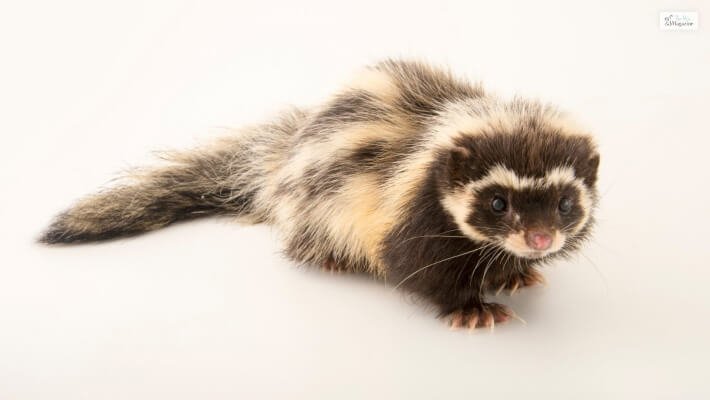
So, why should we care about the zorilla? Just like every player in a game, each species contributes to the overall balance of its environment. Zorillas, with their quirky personalities and distinct behaviors, play a crucial role in helping maintain healthy ecosystems. Let’s dive into what exactly that role is, how they fit into the food chain, and the challenges they face today.
Understanding the Zorilla: A Quick Overview
To start, it’s essential to understand what a **zorilla** is. Often referred to as the striped polecat, the zorilla (Ictonyx striatus) belongs to the weasel family and is native to parts of Africa. These creatures are small, averaging about 1.5 feet long and weighing around 2-4 pounds. What stands out most are their *striking black and white patterns* that mimic those of skunks—an example of nature’s clever designs to ward off predators.
Honestly, zorillas are primarily nocturnal, meaning they do most of their hunting and foraging at night. This behavior not only helps them avoid larger predators but also makes them effective hunters. They have a varied diet, including small mammals, insects, and even carrion, which allows them to adapt to different environments. This flexibility is a key trait for their survival and influences their role in the ecosystem.
The Zorilla’s Place in the Food Chain
Now, let’s talk about how zorillas fit into the food chain. As opportunistic predators, they occupy the role of a mid-level carnivore. By feeding on a variety of prey, they help *control populations* of smaller animals. This aspect is especially vital for maintaining ecological balance. For example, if zorillas weren’t around to eat rodents, those populations could explode, leading to overgrazing of vegetation and affecting other species that rely on plants for food.
Moreover, their scavenging habits help with decomposition. By eating carrion, zorillas assist in breaking down dead animals, which returns nutrients to the soil. This natural recycling process is essential for soil health. You might be wondering why soil health matters—well, healthy soil supports plant life, which is the foundation of all terrestrial ecosystems.
The Role of Zorillas as Seed Dispersers
Another interesting aspect of zorillas is their role as *seed dispersers*. While foraging, these animals often consume fruits and seeds. As they move through their habitat, they may defecate seeds in different locations, contributing to plant diversity. Allow me to explain: when seeds are spread across an area, plants have a better chance of growing in varied environments, which supports a diverse ecosystem.
This natural planting helps maintain the balance of plant species and promotes healthy growth. Think about it—if certain plants are overrepresented because no one is spreading their seeds, it can throw the whole ecosystem out of whack. The zorilla’s role in this process underlies its importance beyond just its immediate feeding habits.
Interactions with Other Species
Zorillas don’t operate in isolation; their interactions with other species are vital to their ecosystem role. For example, their relationship with predators and prey can create a ripple effect in the environment. When zorillas hunt smaller mammals or insects, they help keep those populations in check. This, in turn, benefits the vegetation that those small animals might otherwise overgraze.
Interestingly, zorillas have also developed a defensive strategy against larger predators: their foul-smelling spray. Much like their skunk cousins, they can emit an unpleasant odor to deter threats. This adaptation not only protects them but can also influence the behavior of other animals nearby—both predators and prey. The presence of zorillas might signal the presence of danger, which can change how other animals behave in the area.
Challenges Facing Zorillas Today
As with many species, zorillas face a variety of challenges today. Habitat loss is a significant issue, as agriculture and urban development encroach on their natural environments. When we take away their homes, we disrupt those intricate webs of life that depend on them. Additionally, zorillas are often viewed as pests due to their scavenging habits, leading to unnecessary killings.
Climate change is another threat impacting zorillas’ ecosystems. As temperatures rise and weather patterns shift, the availability of food and suitable habitats can change. This can force zorillas into conflict with humans or other species, further complicating their survival. It raises the question: how do we balance our needs with those of these incredible creatures?
The Importance of Conservation Efforts
To protect zorillas and ensure they continue to play their crucial roles, conservation efforts are essential. This can include creating protected areas that safeguard their habitats and raise awareness about their ecological importance. Education plays a key role in changing perceptions—when people understand that zorillas contribute to a balanced ecosystem, they may be more inclined to support policies that protect them.
Moreover, working with local communities can foster coexistence between humans and zorillas. Implementing sustainable practices that minimize habitat destruction and educate farmers about the benefits of these animals can create a win-win situation. If we care about the health of our planet, we need to think about how every creature, no matter how small, fits into the bigger picture.
The **zorilla** may not be the most famous animal out there, but its role in the ecosystem is undeniably important. From controlling populations of small mammals to helping seed dispersal and acting as scavengers, zorillas contribute to a balance that supports many forms of life. As we face challenges like habitat loss and climate change, recognizing and protecting the role of zorillas becomes crucial for maintaining the rich biodiversity of our planet.
So, the next time you think about wildlife, remember that even the smallest players, like the zorilla, have a powerful influence on the environment. Instead of overlooking these unique creatures, let’s celebrate their contributions and work together to ensure their future.
